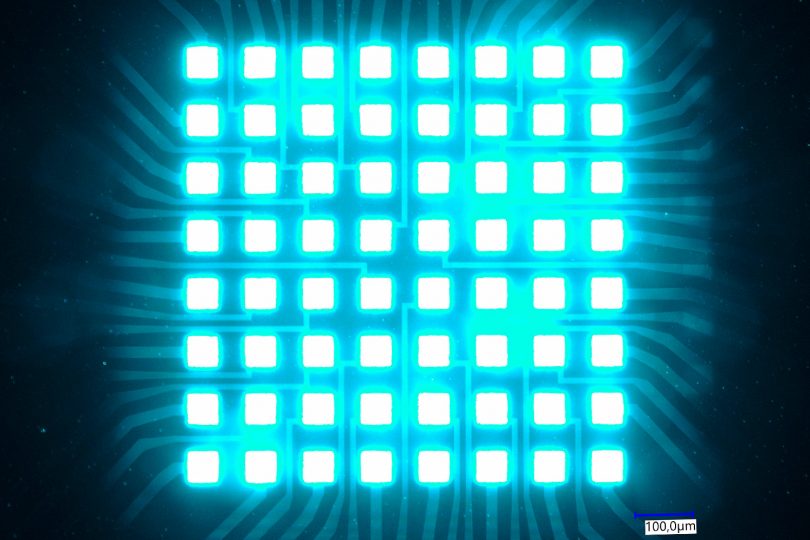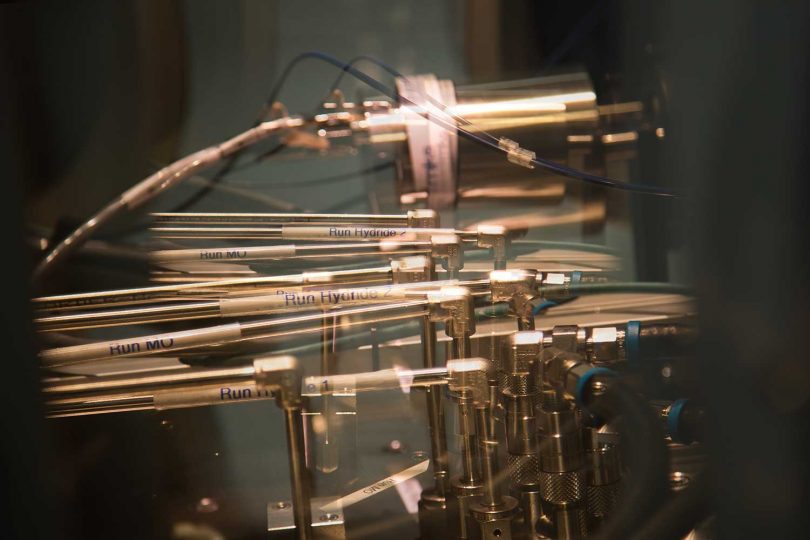Boost for quantum computer development ERDF funding accelerates installation of new laboratory structures for the miniaturisation of components
750,000 euros in funding from the European Regional Development Fund (ERDF) will flow into semiconductor technology at TU Braunschweig until March 2023. Eight funded devices will thus form the MicroPhotonicsLab (MPL) in the nanometrology research centre LENA. The new laboratory structure will make it possible to combine various semiconductor components such as waveguides and laser diodes on one chip. This will allow different photonics research groups to literally merge their expertise on a few millimetres. The goal of a scalable quantum computer in Quantum Valley Lower Saxony is thus moving a big step closer.
If quantum computers are to leave their laboratory environment, their individual components must become more compact and robust. One of the major challenges here involves photonics, the controll and manipulation of light particles (photons). At the Institute of Semiconductor Technology at TU Braunschweig, researchers are developing semiconductor chips to meet the high photonics requirements of quantum computers: Precision light in the smallest of spaces. However, components such as lasers, waveguides and modulators require different materials and even more diverse manufacturing processes. Each component therefore has its own individual production chain.
“The individual groups behind the photonics components have always been in continuous exchange with each other. With the MicroPhotonicsLab (MPL), however, we will not only be able to share know-how between the groups. From March next year we will also be able to bring together the know-how of the groups on one chip,” says Professor Andreas Waag, head of the Institute of Semiconductor Technology. For use in quantum computing, this hybrid integration is crucial. “In the end, we will no longer have external lasers and glass fibres to bring light into the vacuum, but a single chip with everything you need – directly in the vacuum. The MPL thus contributes to the miniaturisation of quantum computing.”
Controlling light on the microscale
The investment in the MicroPhotonicsLab will also benefit the QuantumFrontiers cluster of excellence. The Topical Group “Structured illumination at the nanoscale” brings together scientists from TU Braunschweig, the Physikalisch-Technische Bundesanstalt and Leibniz University Hannover who want to control light at the microscale. Bringing together microscopic light emitters with tiny waveguides in the MPL also opens up new possibilities here.
Project data
With Professor Stefanie Kroker, Professor Tobias Voss and Professor Andreas Waag, three semiconductor working groups at TU Braunschweig come together in the MicroPhotonicsLab (MPL). In total, the MPL involves a structural investment of 750,000 euros until March 2023. The European Regional Development Fund (ERDF) is financing half of the costs, the second half comes from state funds.


